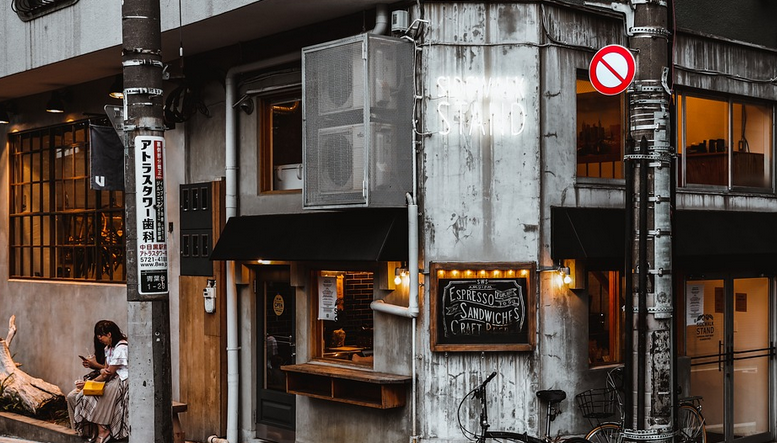Crafting the Perfect Dining Atmosphere
Imagine stepping into a restaurant, your senses alight with anticipation. The aroma of freshly baked bread mingles with the comforting hum of conversation. Every detail – from the warm lighting to the carefully chosen artwork – contributes to an inviting atmosphere that sets the stage for an unforgettable dining experience.
Designing a restaurant interior in 2025 is about more than just pleasing aesthetics; it’s about creating a holistic environment that resonates with your target audience and reflects your brand identity. The future of hospitality lies in understanding how to evoke emotions, tell stories, and inspire moments through every aspect of the dining space.
Setting the Stage: Understanding Your Vision
Before diving into design elements, let’s start by truly defining your vision. Ask yourself some essential questions:
- **What kind of experience do you want to create?**
- Do you envision a casual and cozy atmosphere where friends gather for relaxed conversations, or an elegant space for celebrating special occasions?
- Who are your ideal customers? What type of environment would appeal most to them?
A clear understanding of your target audience will pave the way for every design decision. This knowledge will guide you in choosing appropriate materials, colors, and layout elements that resonate with your intended clientele.
The Power of Storytelling: Design Elements & Functionality
A well-designed restaurant interior is a visual narrative that transcends mere aesthetics. It’s about weaving together functionality and emotion to create an immersive experience for your guests.
Consider these key design elements:
- **Lighting:** A thoughtfully curated lighting scheme can transform the ambiance of your restaurant. Consider using ambient lighting, task lighting for specific areas like the bar or kitchen, and accent lighting to highlight particular features.
- **Colors:** Color psychology plays a significant role in how people feel. Choose colors that align with your brand’s identity and evoke the desired emotions. Warm yellows or soothing blues can create a sense of comfort, while bolder hues like red or orange might encourage excitement.
- **Textures:** Incorporate different textures into your design to add dimension and visual interest. Use natural materials such as wood or stone for an earthy feel or go for sleek finishes like marble or chrome for a modern touch.
- **Comfort & Functionality:** Ensure ample seating, efficient table placements, and convenient access to restrooms, food stations, and other key areas. A comfortable dining experience is crucial for encouraging guests to linger longer.
Beyond the Basics: Incorporating Technology
As technology continues to reshape our world, it’s essential to integrate smart solutions into your restaurant’s interior design. Think about:
- **Interactive menus:** Offer digital menus that allow guests to easily browse through options and personalize their experience.
- **Ambient sound systems:** Play music softly in the background or offer curated playlists based on dining preferences. Consider incorporating an interactive system where guests can control the music or select individual songs.
- **Smart lighting controls:** Utilize smart bulbs and sensors to adjust room brightness, color temperature, and even create personalized settings for different sections of the restaurant based on time of day or event.
Sustainability & Future-Proofing
In this era of heightened environmental awareness, sustainable design choices are not just aesthetically pleasing, they also benefit your image and reduce operational costs in the long run.
Consider these eco-friendly options:
- **Use recycled and reclaimed materials:** Incorporate salvaged wood or repurpose existing materials to minimize waste and promote a sense of environmental responsibility.
- **Focus on energy efficiency:** Incorporate smart technology, LED lighting, and efficient ventilation systems to reduce energy consumption and lower your carbon footprint.
- **Implement water conservation measures:** Use low-flow fixtures in restrooms and kitchens, install rainwater harvesting systems for irrigation, and encourage guests to use reusable silverware.
The Importance of Guest Feedback
Don’t underestimate the power of feedback! Invest in a system where you can gather direct input from your guests about their experience. This could involve:
- **Post-visit surveys:** Send out short questionnaires after dining to ask for specific suggestions and insights.
- **Open-ended feedback forms:** Provide a space on the menu or in the restaurant for guests to anonymously share their thoughts.
- **Regularly conduct focus groups or interviews:** Host small group discussions with potential customers for deeper insights into their preferences and expectations.
The Future of Restaurant Design
The design landscape will continue to evolve, driven by technological advancements and shifting consumer trends.
Here are some emerging trends:
- **Immersive dining experiences:** Virtual reality (VR) and augmented reality (AR) technology could transform the dining experience by creating interactive journeys through history or even an immersive exploration of a new culinary skill.
As you design your restaurant interior in 2025, keep these trends in mind to create a truly innovative and memorable dining space.




